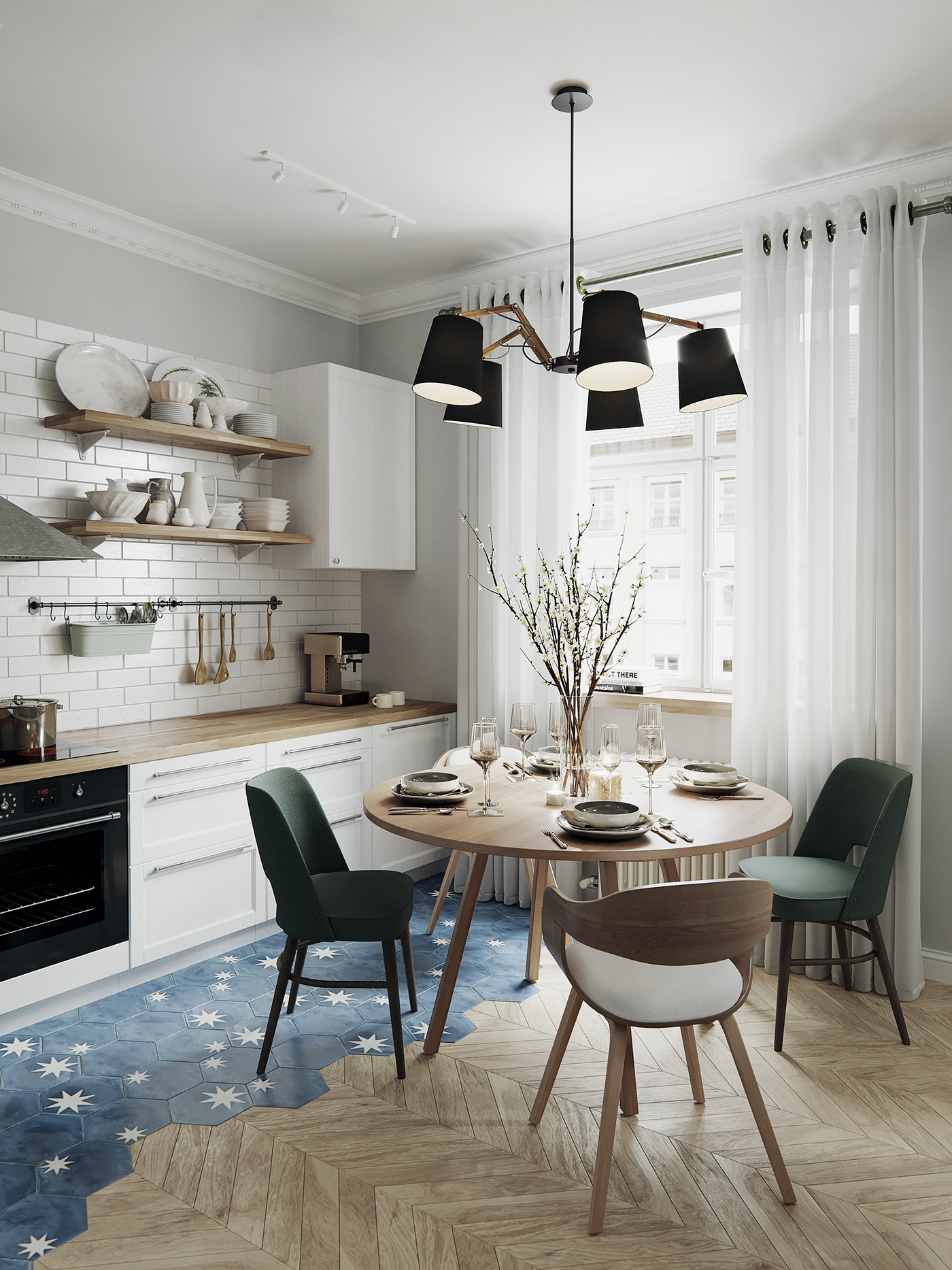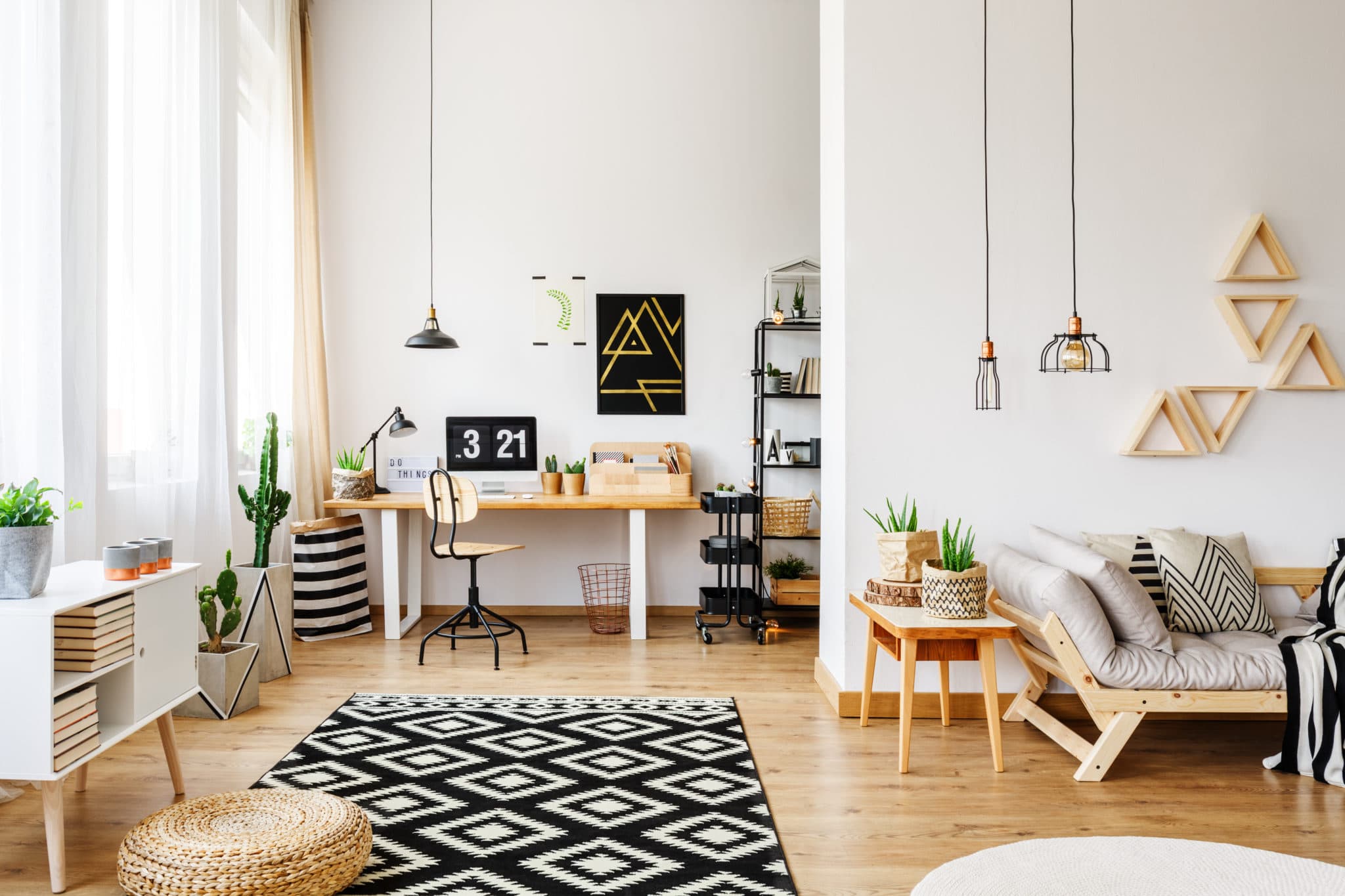
The Role of Wood in Scandinavian Interiors
Scandinavian design has gained immense popularity in recent years, especially for its minimalist and functional approach. One of the key elements that define Scandinavian interiors is the prominent use of wood. This article explores the significance of wood in Scandinavian design and how it contributes to creating a harmonious and inviting indoor environment.
The Connection between Nature and Scandinavian Design

Scandinavian countries are known for their breathtaking natural landscapes, which have greatly influenced their design philosophy. The abundance of forests and the deep appreciation for nature have made wood an integral part of Scandinavian design. Using wood in interiors allows residents to bring the beauty of the outdoors inside their homes, creating a sense of tranquility and connection with nature.
1. Sustainability and Environmental Consciousness

One of the reasons why wood is highly valued in Scandinavian design is its sustainability. Scandinavian countries have long recognized the importance of preserving natural resources and minimizing environmental impact. Wood, being a renewable material, aligns perfectly with this eco-friendly mindset. The use of locally sourced timber helps reduce carbon emissions associated with transportation and supports the local economy.
Additionally, Scandinavian designers often prioritize the use of wood from responsibly managed forests, certified by organizations like the Forest Stewardship Council (FSC). These certifications ensure that the wood comes from forests where the rate of harvesting is balanced with the rate of regrowth, promoting long-term sustainability.
2. Warmth and Coziness

Wood brings warmth and coziness to Scandinavian interiors. The natural tones and textures of wood create a sense of comfort and serenity in living spaces. Whether it's a light-colored birch or a richly grained oak, wood adds a touch of natural beauty that cannot be replicated by synthetic materials.
The use of wood in flooring, furniture, and wall paneling helps create a warm and inviting atmosphere. In Scandinavian homes, it is common to see wooden floors with a light finish, allowing the natural grain to shine through. This not only enhances the visual appeal but also provides a tactile experience, making the space feel more welcoming.
3. Simplicity and Minimalism

Scandinavian design is renowned for its simplicity and minimalism. Wood plays a crucial role in achieving this aesthetic. The clean lines and uncluttered look of wooden furniture and accessories contribute to the overall minimalist vibe.
Wood is often used in its natural state, with minimal additional treatments or embellishments. This allows the material to speak for itself, showcasing its inherent beauty. The simplicity of wooden elements perfectly complements the understated color palette commonly found in Scandinavian interiors, which typically consists of whites, grays, and muted earth tones.
The Versatility of Wood in Scandinavian Design

Wood is an incredibly versatile material, offering numerous possibilities for incorporating it into Scandinavian interiors. From furniture to architectural elements, wood can be used in various forms to create a cohesive and harmonious design.
1. Wooden Furniture

Wooden furniture is a staple in Scandinavian design. The clean and timeless designs of Scandinavian furniture often feature wooden frames and legs. The use of wood adds a touch of warmth and natural elegance to chairs, tables, and cabinets.
One characteristic of Scandinavian wooden furniture is its functionality. Scandinavian designers prioritize practicality and usability, making furniture pieces that are not only visually appealing but also serve a purpose. For example, a wooden dining table may have extendable leaves to accommodate guests, while a wooden sideboard may provide ample storage space.
2. Wooden Flooring

Wooden flooring is another hallmark of Scandinavian design. The light-colored wooden floors create a sense of spaciousness and enhance the natural light in a room. The seamless flow of wooden flooring throughout the space contributes to the overall cohesion and simplicity of the design.
Scandinavian homes often feature hardwood floors made from oak, pine, or birch. The wide planks and smooth finish add a touch of elegance, while the natural variations in the wood grain create visual interest.
3. Wooden Wall Paneling

Wooden wall paneling is a popular design element in Scandinavian interiors. It adds texture and warmth to a space, transforming plain walls into focal points. Whether it's a full wall covered in wooden panels or a partial installation, the use of wood on the walls creates a cozy and inviting atmosphere.
Scandinavian designers often prefer light-colored or whitewashed wood for wall paneling. This choice helps reflect natural light and maintains the airy and open feel of the interior. The vertical or horizontal arrangement of the wooden panels can also create visual interest and add a dynamic element to the design.
The Impact of Wood on Well-being

Wood not only contributes to the aesthetics of Scandinavian interiors but also has a positive impact on well-being. The presence of wood in living spaces has been shown to promote relaxation, reduce stress, and improve overall mood.
1. Biophilic Design and Connection with Nature

Biophilic design is an approach that seeks to incorporate elements of nature into indoor spaces. Wood, being a natural material, plays a significant role in biophilic design. Its presence helps create a connection with nature, evoking a sense of calm and tranquility.
Studies have shown that exposure to natural materials, such as wood, can reduce blood pressure, heart rate, and stress levels. The tactile experience of touching wood can also have a soothing effect on the mind and body.
2. Acoustic Comfort

Wood has excellent acoustic properties, making it an ideal material for improving the sound quality in interiors. Its natural density and ability to absorb sound vibrations help reduce echo and reverberation, creating a more pleasant and comfortable environment.
In Scandinavian homes, the use of wooden flooring, wall paneling, and furniture helps minimize noise disturbances, allowing residents to enjoy a peaceful and quiet living space.
3. Visual Harmony and Balance

The presence of wood in Scandinavian interiors contributes to visual harmony and balance. The natural patterns and textures of wood add depth and interest to the overall design. Wood can be used as a focal point or as a subtle accent, depending on the desired effect.
By incorporating wood in various elements of the interior, such as furniture, flooring, and wall paneling, designers create a cohesive and unified space. The repetition of wood throughout the room ensures a sense of continuity and balance, enhancing the overall visual appeal.
Summary

The use of wood is a defining characteristic of Scandinavian interiors. Its sustainability, warmth, simplicity, and versatility make it an ideal material for creating harmonious and inviting living spaces. Wood brings a sense of nature indoors, promoting well-being and visual harmony. Whether it's through furniture, flooring, or wall paneling, wood plays a crucial role in shaping the aesthetic and atmosphere of Scandinavian design.
By embracing the beauty of wood, Scandinavian interiors transcend the boundaries between indoors and outdoors, creating a space that is both functional and aesthetically pleasing. The connection with nature and the focus on sustainability make wood an essential element in Scandinavian design, contributing to its enduring popularity.